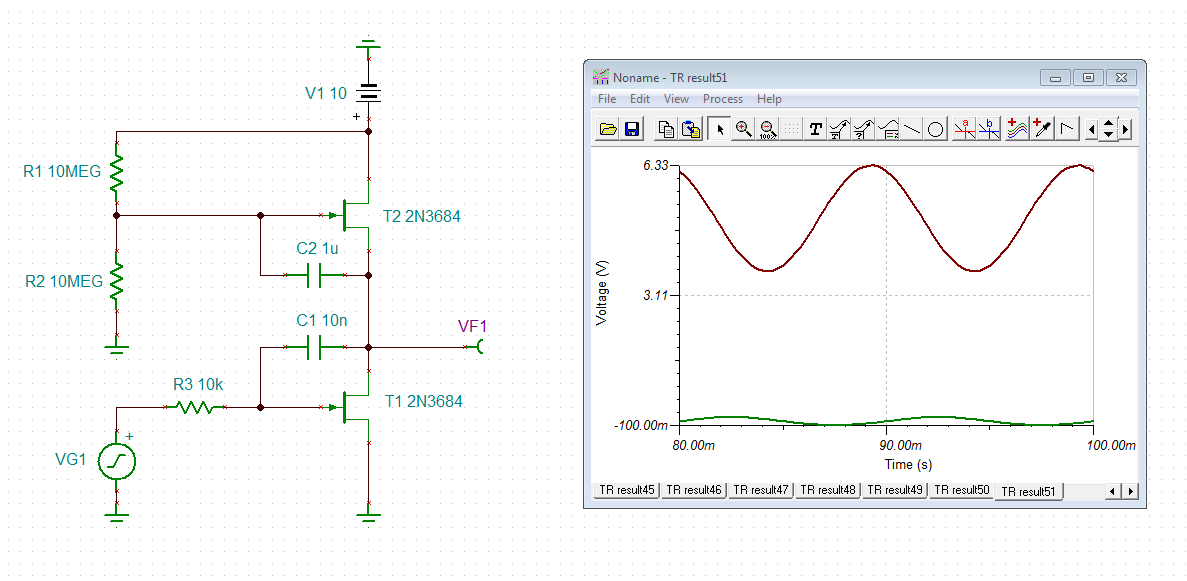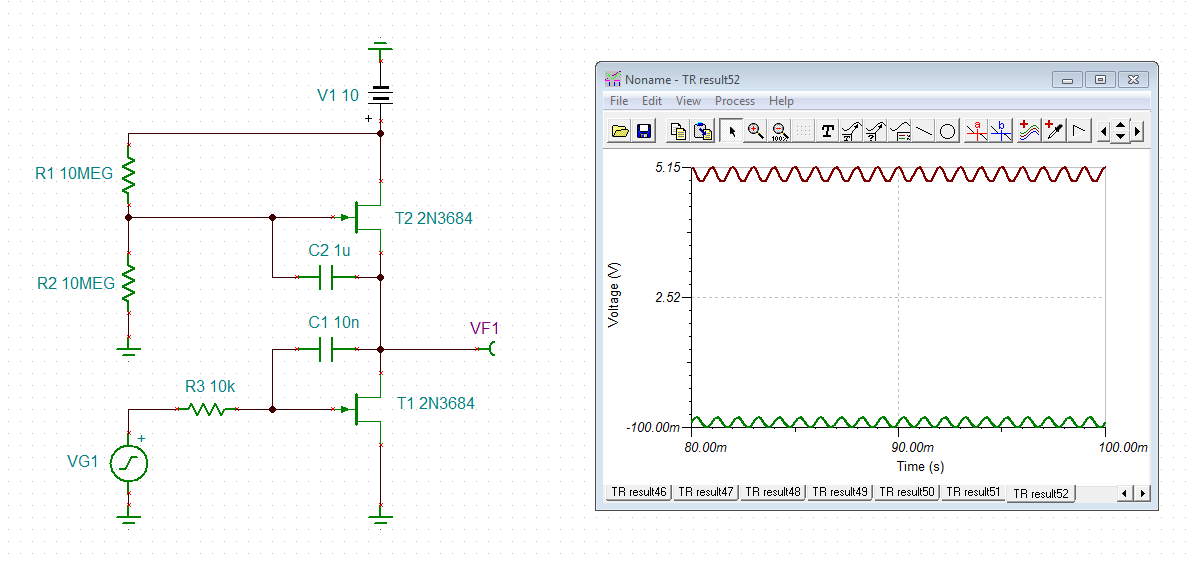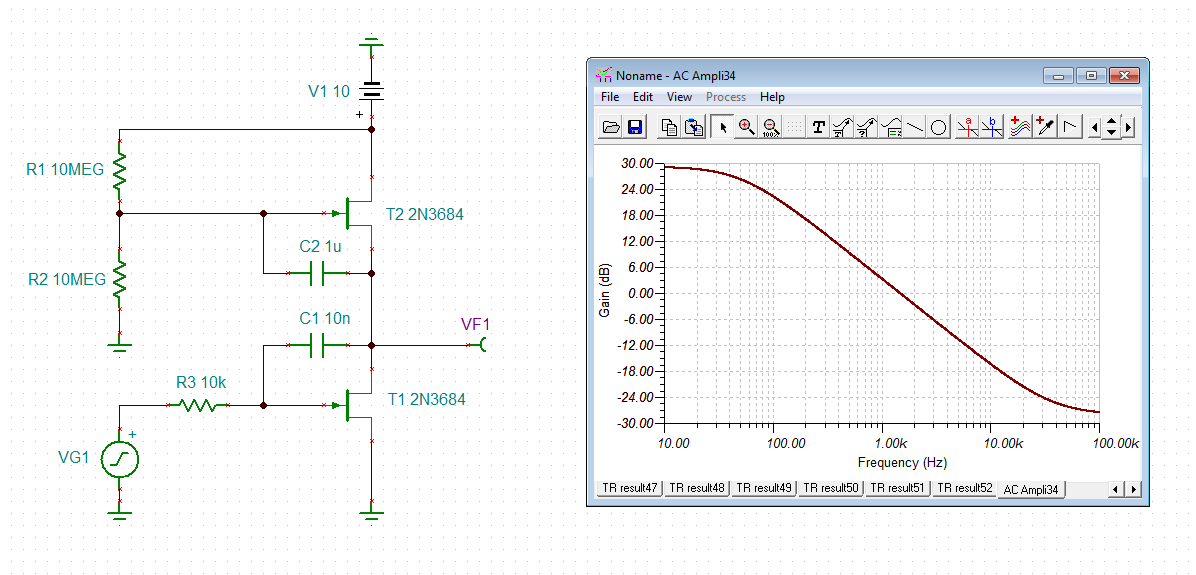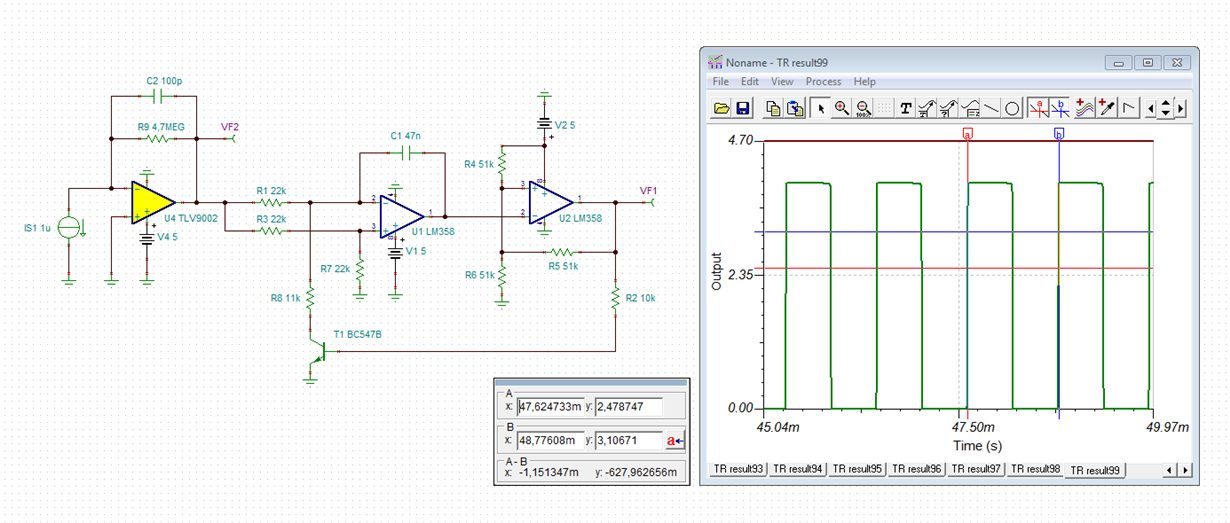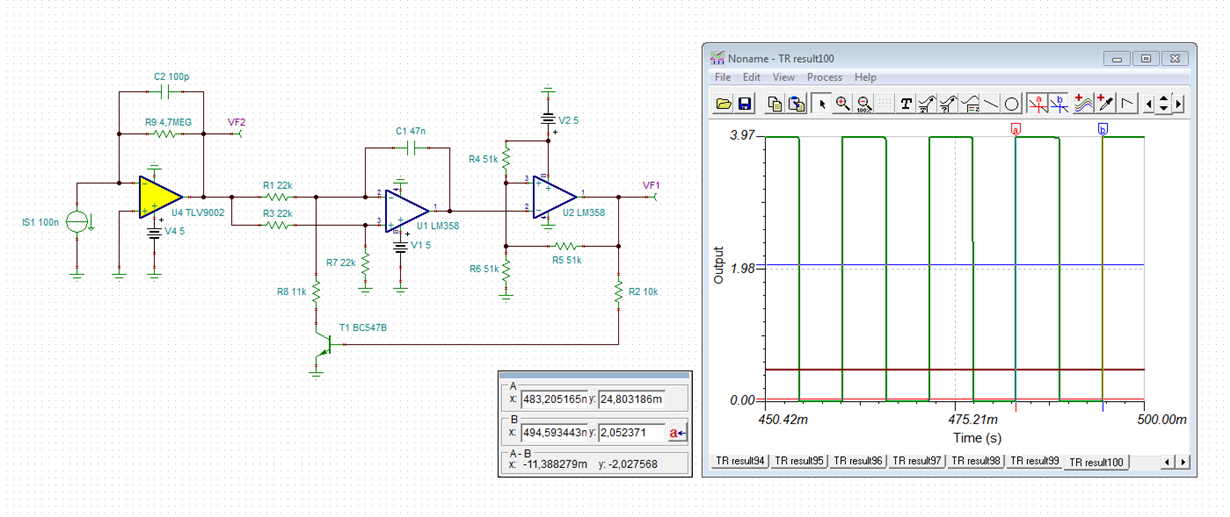Other Parts Discussed in Thread: TLV9002, LMV358, LM358
This is for sensing sunlight for a product in an agriculture environment. I have the transimpedance circuit already for converting the output of a photo diode to a voltage. The photo diode is looking at the sun from a greenhouse. I want to integrate that essentially DC signal over time. For the max voltage into the integrator (say 5 v) if that max voltage is present all the time I want the integrator to reach its max voltage after 5 minutes. I will short the integrator capacitor through a resistor after the integrator reaches its max output voltage to return it to zero. I am using 4.7 meg as the input resistor (R1) and also as the feedback resistor (Rf) and between 94 and 100 uf for the feedback capacitor (Cf). I believe this should give about 5 minutes of time (tau=0.69CfR1). I would use a TL082 (cheap; low offset V; etc) if it was single supply. I guess I could use EAGLE CAD to supply a circuit if needed. Looking for the right circuit and device (op amp) for this.



